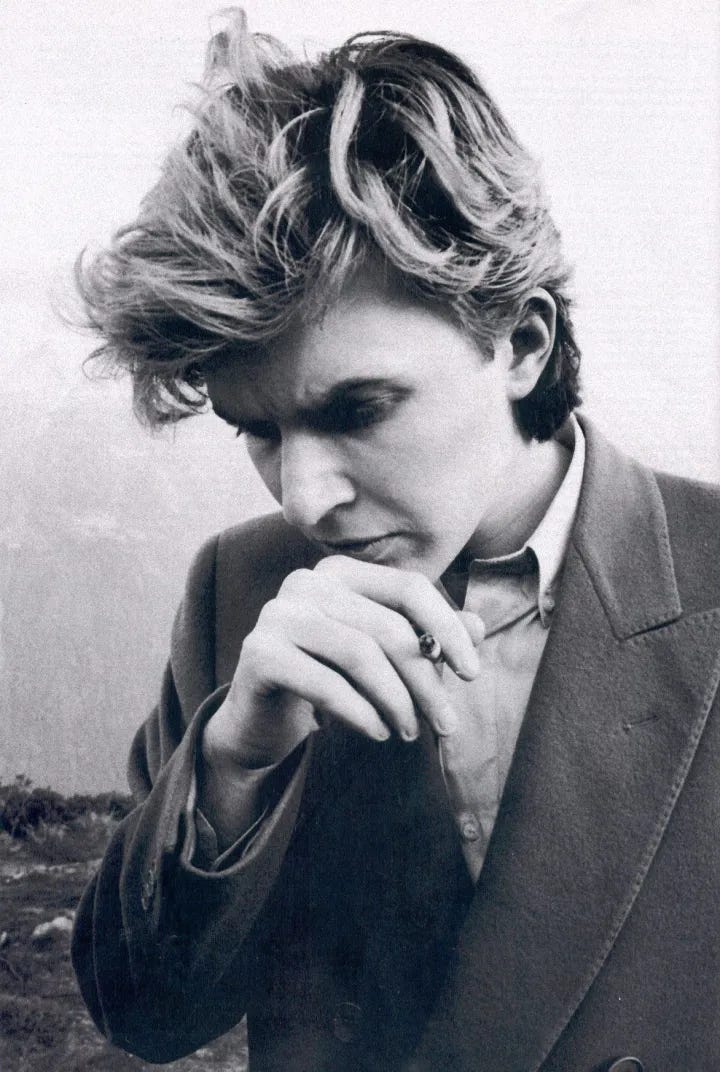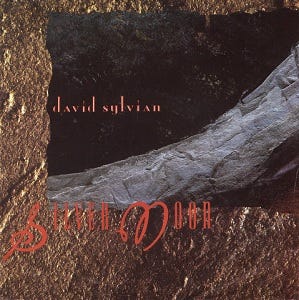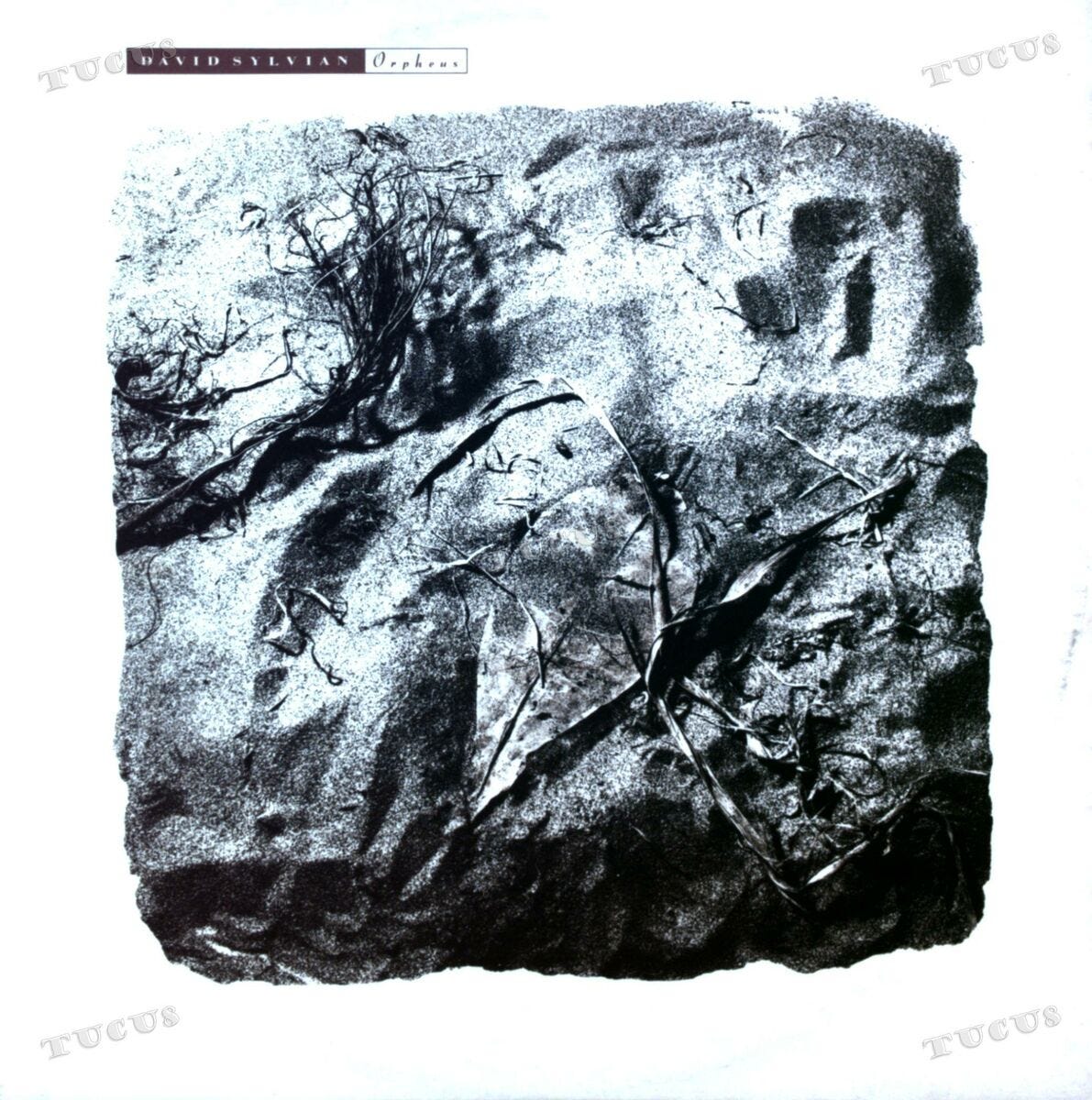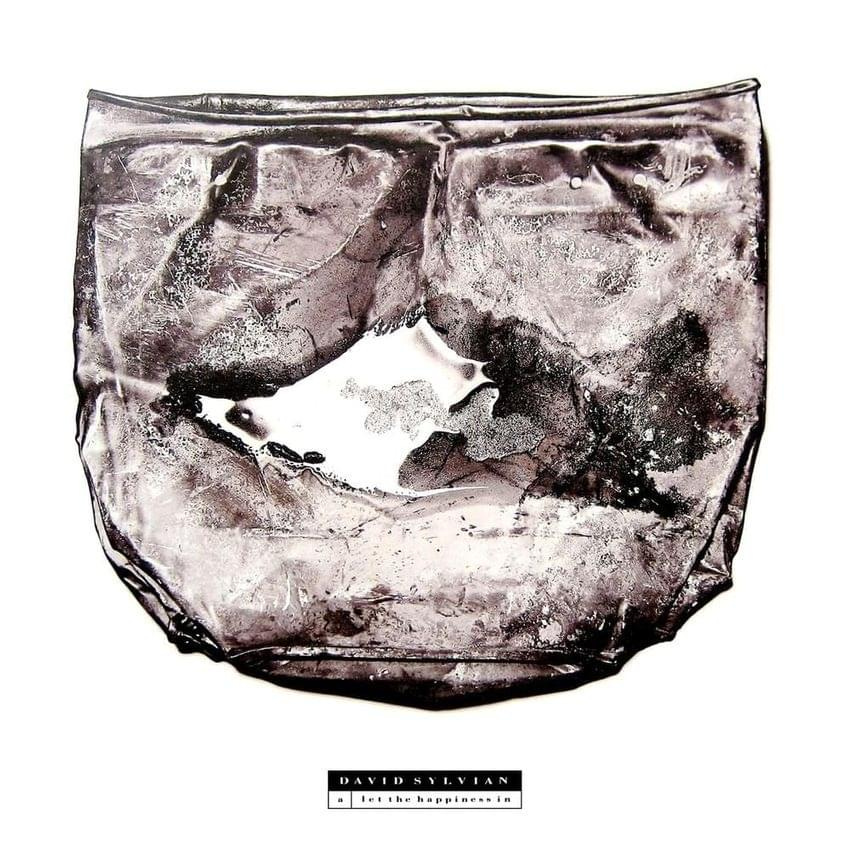New Wave at its Most Ethereal and Experimental – Exploring The 1980s Solo Music of David Sylvian
A traversal of the beautifully evocative landscape of David Sylvian's 1980s solo music and a discussion about its uniquely progressive position in the music scene of its time and beyond
The 1980s music scene witnessed a widespread branching out of musical styles and ideas with much interweaving and melding taking place across all types of media. The dawn of the new decade harkened a new cultural era where artistic experimentation and diversification was becoming much more commonplace, with artists of all sorts in a constant, fervent search for what’s next, what could be even more exciting and fresh than their latest work and the work all around them. New Wave was one such new form of captivating music which would dominate the era with much of its defining characteristics bleeding over into many other genres. Outrageously flashy visual presentations, a penchant for the burgeoning world of electronic instruments and a quirky pop sensibility which provided a fun vivacity for mainstream music were some of the foremost tenets. Prominent artists like Depeche Mode, Duran Duran, Blondie, The Police and The Cure would not only contribute heavily to the cultural landscape of their time, but maintain artistic longevity that would continue to inspire future generations of innovators and rule-breakers.
One highly influential band which is by no means obscure yet still is not brought up nearly enough amongst their contemporaries is Japan. Perhaps this is due to the fact that their creative flame burned out quite quickly with the group disbanding early in the 80s, but even the work they put out beforehand would play a huge role in the New Wave environment. Although forming in 1974, it is their last two albums of their career and the two which breach into the new decade which remain significant landmarks within the genre and beyond. Gentlemen Take Polaroids (1980) and Tin Drum (1981) are some of the highest artistic achievements to emerge from the New Wave/New Romantic scene with both works putting the band at the forefront of musical innovation. David Sylvian, Mick Karn, Steve Jansen, Richard Barbieri and Rob Dean (only for Gentlemen Take Polaroids) all played a large part in expanding what New Wave-like music can be and how central a role experimentation plays in producing eclectically brilliant works of art.
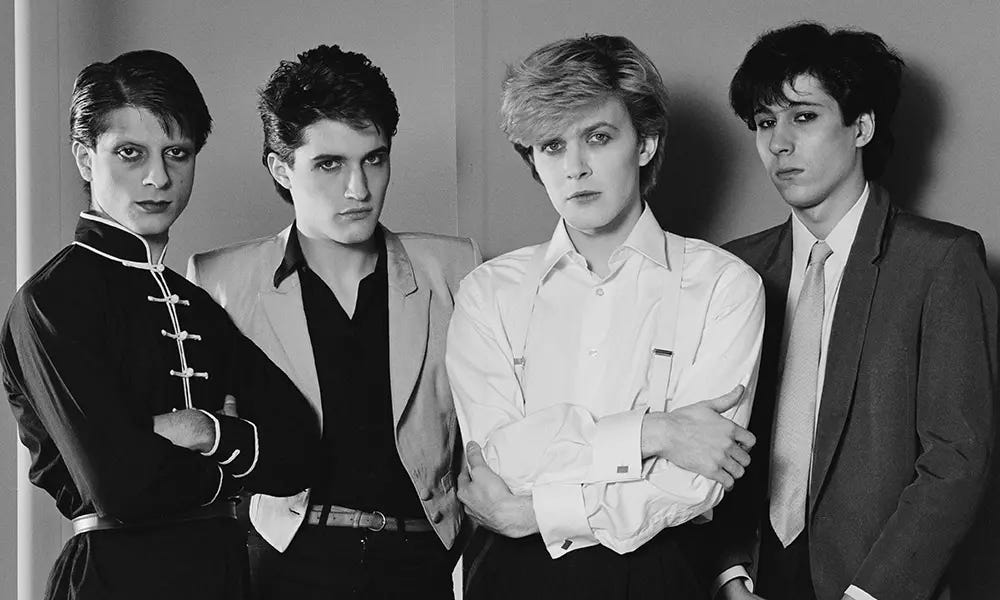
After Japan disbanded in 1982, the various members would split off to pursue separate creative ventures with David Sylvian, formerly the singer and lyricist of the group, endeavoring to start up a solo career. Before the release of his solo debut album, Brilliant Trees (1984), he would work together with Ryuichi Sakamoto for two collaborative singles – “Bamboo Houses” in 1982 and “Forbidden Colours” in 1983. The sonic aesthetic of “Bamboo Houses” can be traced back to the abstract exploration of Japan’s last album Tin Drum while “Forbidden Colours” carries on Sylvian’s penchant for poignant balladry which was first started in Japan and would span the whole of his solo work.
David Sylvian would then definitively start his solo career in 1984 with his debut album, Brilliant Trees, and would later release three more albums over the course of the 1980s: Alchemy: An Index of Possibilities (1985), Gone to Earth (1986), and Secrets of the Beehive (1987). His artistry would extend to many more projects throughout the decade, but these four releases chart the development of his craft and how he managed to push the envelope so far while remaining (to some degree or another) in the realm of 1980s New Wave or Art Rock. Along with his other visionary bandmates in Japan, he certainly made great strides in carving a distinctly individual niche within an already diverse musical climate, but it is with the start of his solo career that David Sylvian began to truly flourish as an artist. His experimental sensibilities and desire to always search out for new creative possibilities contribute to the establishment of a music career which was more conceptually interesting, sonically spellbinding and artistically inventive in comparison to many of his contemporaries in the 1980s music scene.
While his solo career spans various decades and encompasses a wide breadth of artistic endeavors, I will be solely focusing on the 1980s portion of his work because of its unique relation to the rest of the music environment of the time. Even with his tenure in Japan, he immersed himself in a creative zone where eclectic art was free-wheeling and unabashed amongst a greater scene that largely held differing artistic goals. What makes his initial establishment of his solo career exceptional however, was just how far he sought to develop something quite separate from what was in vogue at the time. This determined drive to produce a particular and personalized kind of art that was ever-evolving, thought-provoking and deeply emotive would create the foundational impetus that would be the guiding force throughout the whole of his musical career – a force which positively differentiated him from the more popular and standardized music and art practices of his time, starting from the 1980s to beyond.
Brilliant Trees (1984)

Fitting the criteria for how debut albums usually present, Brilliant Trees acts as a bold and self-assured starting point for introducing us to a world which may seem initially familiar, but will start to drift towards new artistic planes as the music progresses. The track list contains numbers which allude to the more lively flashiness of Japan’s final two albums, but even in these tracks there lies some deeper essence that would soon permeate all of Sylvian’s solo work. Released June 25th, 1984, this album would end up as the highest charting of his whole career at number 4 in the U.K. and the single “Red Guitar” from the record would end up as the highest charting single of his career, landing at number 17 in the U.K. as well. Three singles would be extracted from the album: “Red Guitar,” “The Ink in the Well” and “Pulling Punches.” These three tracks would be the most reminiscent of Japan on the album with the four others helping to set up the more ambient and expansive soundscapes to remain in his creative toolkit from here on out.
The track list for Brilliant Trees is listed as thus:
Pulling Punches*
The Ink in the Well*
Nostalgia*
Red Guitar*
Weathered Wall
Backwaters
Brilliant Trees*
*the noteworthy songs selected here for particular discussion and examination
The distinctive musicians brought in as musical support for the material are especially notable for their indispensable importance to the particular sonic aesthetic of Sylvian’s new artistic space. Steve Jansen, Richard Barbieri, Ryuichi Sakamoto, Holger Czukay, Kenny Wheeler, Phil Palmer, Danny Thompson, Wayne Brathwaite, Ronny Drayton, Jon Hassell and Mark Isham are some of the notable alumni whose contributions help to greatly shape the peculiar and beautiful sound of the record. Just as critical was Steve Nye’s exemplary production, whose elegant sheen and keen attention to each and every abstract detail is perfectly in line with David Sylvian’s artistic sensibilities.
Brilliant Trees opens up with “Pulling Punches” which would be released as the third single from the album and is offered as perhaps the one and only vestige of Sylvian’s former work in Japan before an entirely new aesthetic world would be fashioned throughout the course of the record. A swinging rhythm, exotic-sounding synthesizers, an agile and punchy bass and Sylvian’s suave, bouncing vocals – one would be forgiven in thinking that this was a song taken from the Gentlemen Take Polaroids era; it certainly helps that 3/4ths of said band are involved here. It’s a suitably fun and colorful song which was cleverly chosen as the first presentation of Sylvain’s new solo career as it is not the jolt of aesthetic change that would gradually present itself throughout the course of Brilliant Trees but a last breath of familiarity.
Sheltered lives spent partially breathing
Are gathered together under new religion
We then reach “The Ink In The Well,” the second single extracted from the record, which is a marked shift in tone and musical character which may be seen as the true introduction to David Sylvian’s new artistic venture. This track is a brooding change from the previous party of “Pulling Punches” with a more subtle musical approach being employed in place of the flamboyant New Wave one with Sylvian’s new artistic identity making itself definitively known henceforth. His velvety voice is dropped down to a more restrained and lyrical timbre which serves to highlight a more refined and intricate lyrical approach quite different from those written in the past.
The lights of the ashes smoulder through hills and vales
Nostalgia burns in the hearts of the strongest
Picasso is painting the ships in the harbour
The wind and sails
These are years with a genius for living
Here we see David’s poetic writing abilities being at the fore of his new style of composition and delving much deeper than the surface-level, more direct approach of his lyrics while in Japan. We find that Sylvian is the kind of lyricist who is a hyper-aware observer that feels all that is around himself deeply and profoundly. Not only are varying images vividly described, but more broad lyrical topics such as spirituality and sense of self are now being explored at length. Perusing through his catalogue, one may reach the conclusion that the unifying factor of David Sylvian’s lyrics is the simple concept of a deeply feeling and ever-pensive wanderer trying to make sense of the world and their position in the grand scheme of it all.
The music itself still contains the shifting and complex rhythmic practices stemming from Japan, but the other musical constituents are a welcome change. Instead of the leaping and ever-smooth bass lines formerly presented by Mick Karn from years prior, the bass in David Sylvian’s work lies much deeper at the very core of his music, a potent energy providing a heft to all of the swirling and psychedelic color up above. In this case, an upright bass steers us along with a low resonance which is further bolstered, tonally speaking, by a morosely strummed guitar, a subtle organ and of course Sylvian’s brilliant, atmosphere-setting vocals. All of this helps to present a relatively simple track, but one which holds strong implications for the rest of the album and this new process of creating music.
“Nostalgia” is even more of a far cry from the fairly straightforward atmospheric presentations of Japan with this song being a first display of Sylvian’s evident care for “breath” and “depth” in the soundscapes he fashions. The important thing to note about songs like “Nostalgia” is that overarching structure is never totally done away with and one can still detect the various verses, choruses etc. organized rationally throughout. For all of his musical experimentation, David Sylvian never strays far from some semblance of conventional form, but reinterprets it to fit into the much grander and complex landscape of his artistic visions.
The grounding, poignant key of D minor, spacious keyboards looming over the entirety of the track, clean guitars delicately weaving an atmospheric latticework and even the rhapsodic helpings of flugelhorn contribute to a unique kind of ambient work that is able to exist in a space that is semi-accessible yet firmly removed from typical song conventions. It is also the perfect kind of musical setting in which David Sylvian’s lyrics fully come to life and are imbued with an emotive energy which is necessary to effectively convey these idiosyncratic topics which search far beyond straightforward expression.
I’m cutting branches from the trees
Shaped by years of memories
To exorcise these ghosts from inside of me
“Red Guitar” is the first true example on the album of how David Sylvian reinterprets what a “Pop” song can be and how one can stretch the limits while still leaving the basic musical framework identifiable. This would be the first single released from Brilliant Trees and in fact, this song would even end up being his most successful solo single in his discography. The trajectory of the music faithfully follows the “Pop song” formula, but it is all the inventive details within which make this song a fascinating selection for a single.
The verses are of the same sort of dour character displayed in “The Ink In The Well" with the acoustic guitar and bass going back and forth on these two chords with this weighty rhythmic figure serving as an anchor upon which a flashier and more agile piano makes an entrance and whose contrasting tonal character leads us to the surprising change of tone in the chorus. The Funk influence swiftly makes a declamatory appearance as the formerly established mood seems to be dashed away momentarily, but will just as quickly return when the fanfare quickly vanishes.
“Red Guitar” clearly displays two important traits of David Sylvian’s songwriting prowess which firmly secures his position as a hyper-observant and consistently imaginative singer-songwriter whose creative palette is vast and ever-interesting. Firstly, this song displays that the instrumentation employed is thoughtfully considered in not just a surface level appearance manner, but in how it subtly contributes to the overall tonal direction of the work. The way Sylvian cleverly contrasts each instrument in ways that propel the emotive path of the song in varying directions is a skill that most writers don’t take advantage of and which adds much to the depth of color any piece of music can posses if properly accounted for.
The next noteworthy facet is David Sylvian’s grasp of shifting dynamics and how a single song may contain a plethora of differing moods which present a sonic landscape that is much more expansive and detailed than most other “Pop-inclined” songs of the time and beyond. As mentioned before, the jumps between the verses and choruses in theory would be jarring, but within this context work seamlessly and provide fun contrast within a rather linear framework. Sylvian takes after David Bowie in this regard in being able to smoothly meld together divergent stylistic trademarks into a cohesive and captivating whole – moody, tonally ambiguous verses offset by bright, lively choruses, for example. This intriguing dichotomy is represented through his complex lyrics just as much as the music itself.
Verse:
You may ask me why do I fail
Just when I’m needed
Chorus:
I play my red guitar
It’s the devil in the flesh
It’s the iron in my soul
The last song on the record, the title track, “Brilliant Trees,” serves as a foreshadowing of sorts to the artistic planes that David Sylvian would later travel through on the following three albums of his. The emotionally revealing lyrics and the somber, pipe organ-like accompaniment supporting them call to mind the intimate ballade-like character serving as the compelling groundwork for Secrets of the Beehive. The generous stretching of song structure and expansive musical exploration beyond such typical confines will be employed all throughout the Gone to Earth material at length, whether through the song side or the ambient side. The meditative and perhaps spiritual freedom brought about by the rhythmic, melodic and structural relinquishing of typical song direction/narrative is seen all throughout the experimental Alchemy: An Index of Possibilities.
While the whole of Brilliant Trees showcases an artist confidently searching out for new artistic horizons beyond that which he had known before, this song represents the perfect encapsulation of David Sylvian’s ambitions and priorities as an artist. Yes, even beyond Japan he could still write a catchy Pop-esque tune, but it is now being done in such a way that looks beyond the typical, ubiquitous formatting. Aside from that, he pushes the limits of what can be done within a song; what more can be expressed through the lyrics; how the diverse instrumentation can play a deeper and more central role; how dynamics and emotional expression can be broadened and search out for more than the commercially friendly musical scene that was all around. This ambitious song, from this aspiring album, previews the magnitude that would come out of David Sylvian’s solo music and what it would mean for the future of experimentally driven music.
My whole world stands in front of me
By the look in your eyes
By the look in your eyes
My whole life stretches in front of me
Reaching up like a flower
Leading my life back to the soil
Alchemy: An Index of Possibilities (1985)

This album occupies a peculiar spot within David Sylvian’s solo work as it is regarded by many as simply an intermediary album; a prelude of sorts leading up to the heavyweight album that would be Gone to Earth. This record may also be seen as a compilation album as it encompasses three separate works for varying artistic projects: the first work, “Words with the Shaman” was music released as its own independent EP; “Preparations for a Journey” was produced for a Japanese autobiographical film about Sylvian himself and “Steel Cathedrals” served as the musical backdrop for a short film produced by Sylvian and Yasayuki Yamaguchi.
The track listing for the album is listed as thus:
Words with the Shaman – Pt. 1 (Ancient Evening)
Words with the Shaman – Pt. 2 (Incantation)
Words with the Shaman – Pt. 3 (Awakening – Songs from the Treetops)
Preparations for a Journey
Steel Cathedrals
“Words with the Shaman” is the kind of work which takes the grand scope of what could rightly be an elaborate odyssey and condenses it into a more centralized end product. With all three parts taken as one continuous work, it is the most dynamically nuanced of all the tracks on the record as its ambient excursions go beyond musical floatation, but rather move into distinct, interrelated territories and moods. Produced by both David Sylvian and Nigel Walker, the session musicians that would take part in the recording process involved Jon Hassell, Holger Czukay, Percy Jones and Steve Jansen. This is a suitable introduction to Sylvian’s ambient compositions as it isn’t as emotionally and/or spiritually heavy as his later adventurous journeys.
Part 1 is a lush and serene movement which ushers in Sylvian’s ambient capabilities separate from any inclusion in a typical song structure. Part 2 harkens back to his more funk-leaning inclinations with the mood presented in the prior part now being much more rhythmically involved for a brief spell. Part 3 is a trance-inducing and exotic rhythmic propulsion which gives the impression of floating high amongst the towering trees and observing the rolling landscape down below – hence the title, “Awakening - Songs from the Treetops”. Overall, this first work presents us with the deep, sonic contemplation imbedded in all of his ambient work, but this music still retains a lighthearted and even fun atmosphere which renders it as fairly accessible as far as ambient music as a whole goes.
The next piece, “Preparations for a Journey” is an exemplification of Sylvian’s frequent implementation of Eastern-inspired elements throughout his music whether it is musical content or lyrical subject matter. As regards this work, the Eastern concept of musical rhythm is employed such that the melodic line can be free to soar about on its own metrical terms without strict adherence to typical, Western procedures. As such, the “melody” in this piece is a florid entity that doesn’t feel inclined to present any accessible “hook” to the listener, but rather inhabits a sort of musical stasis where time stands still and gives one the opportunity to experience something more than just simple musical listening. Just a lone, quavering instrument over a plush ambient bed with some light percussion at the very end is all that is needed for this skeletal work to present a serene and meditative environment as a truly reposeful interlude within the album.
The last piece of the album, “Steel Cathedrals” is the most representative of a musical concept that David Sylvian would be sure to exercise throughout the whole of his solo career. While Sylvian could certainly write within the bounds of conventional songwriting with approachable formatting, catchy melodies and straightforward musical direction, he valued just as highly the freedom that can be found in unrestrained improvisation. This refers back to Eastern musical practices where there is often an emphasis on drone-like pieces of music that can present a lot over just a foundational rhythmic bed. This quote from Sylvian himself should further elaborate upon this concept in relation to his music:
“The details are what always interested me. And so I just began to spend more and more time on those details, until they came to the forefront of the material-textures and atmospherics. I began to elaborate on those more and more and push the rhythmic element a little bit further back.”
David Sylvian
[davidsylvian.com]
Rhythm would of course remain a central element in his work, but the notable takeaway is how he places importance upon the many subtle intricacies within his music which truly are the heart of his style of expression – his ability to do so much with a more or less simplistic basis to express these often complex artistic concepts in an unbound and cathartic manner.
The piece nears twenty minutes in its duration and, thanks to the crucial contribution of Ryuichi Sakamoto, possesses a cinematic arc that exists simultaneously alongside Sylvian’s penchant for free improvisation. The other key contributors to the track include Steve Jansen, Robert Fripp, Kenny Wheeler, Holger Czukay and Masami Tsuchiya. “Steel Cathedrals” is certainly a slow burning work and does not provide instant gratification by any means, but this is precisely what makes the work great. While Classical and Jazz music has plenty of works that are patient in its presentation and can draw out music to its full, comfortable extent, “popular music” is not designed to abide by this principle at all.
Periodic, weighty percussive hits which would extend to a more elaborate percussive bed; a soft and spacious ambient room surrounding the whole musical journey and carefully placed helpings of piano, guitar and flugelhorn as ornamentation really make this track a work which inhabits an artistic territory expanding beyond music to a broader type of sensorial experience. “Steel Cathedrals” fits right into modern music composed for movies, television shows and video games due to the ingenious ability of Sylvian to yield musical color in pristine, expansive and evocative ways in all of the kinds of music that he puts out.
For context, this was the flourishing era of Mtv and top 100 charts which would significantly aid in furthering the commoditization of music consumption on a wide scale for the public. Sylvian himself knew all too well the unescapable presence of this monetarily influenced, cultural climate from his own involvement in his previous band, Japan, and even with bits of his solo work. To be a pretty well-known artist in his field and endeavor to put out this kind of work displays how David Sylvian truly was a legitimate artist through and through who pursued a singular, artistic path beyond the more accessible and artificial exhibitions from his musical contemporaries.
Gone to Earth (1986)

Out of all of David Sylvian’s musical output in the 1980s, Gone to Earth is perhaps the most daunting in its presentation, but it is simultaneously the most comprehensive in how it presents the core of his artistry. While this work perhaps shouldn’t be your very first introduction to Sylvian’s work, taking the time to sit down with it and take in all its vivid details and imagery, the grandly romantic singing style, intricately lush instrumentation and visceral lyricism will be greatly rewarding – not just for a deeper understanding of David Sylvian’s solo material, but for a widened perspective of what music can be in a context that’s not quite commercial yet not quite fully Avant-Garde. This album displays that he is able to balance these two extremes in a way that most artists of his time (and beyond) could not effectively do, providing diverse music for varying types of listeners.
Gone to Earth was released on September 1st, 1986 and was the third album to be released by David Sylvian and is often viewed as the true follow-up to 1984’s Brilliant Trees. This record is a double album with the first disk dedicated to songs and the second disk containing instrumental pieces. As to be expected, the record company did not care for the instrumental work and only provided funding for the songs of the album, leaving David to take it upon himself to cover for the ambient half of the record. His persistence in ensuring that the instrumental material remained part of the album is indicative of the kind of dedicated artist David Sylvian is.
Of course, crucial session musicians also played a central role in the recording of this album and include such notable names as: Robert Fripp, Phil Palmer, Ian Maidman, Steve Jansen, John Taylor, Kenny Wheeler, Richard Barbieri, Bill Nelson, B.J. Cole, Harry Beckett and Mel Collins. Also strewn throughout the album are little voice snippets that appear here and there in the middle of the songs and include voices from Robert Graves, John G. Bennett and Joseph Beuys. As with Brilliant Trees, Steve Nye handles the gorgeous production which is just as integral to the grand experience as the instrumentalists.
The full track listing for Gone to Earth is listed as thus:
Disk 1:
Taking the Veil*
Laughter and Forgetting
Before the Bullfight*
Gone to Earth*
Wave*
River Man
Silver Moon*
*the noteworthy songs selected here for particular discussion and examination
Disk 2:
The Healing Place
Answered Prayers
Where the Railroad Meets the Sea
The Wooden Cross
Silver Moon Over Sleeping Steeples
Camp Fire: Coyote Country
A Bird of Prey Vanishes into a Bright Blue Cloudless Sky
Home
Sunlight Seen Through Towering Trees
Upon This Earth
“Taking the Veil” was the first single to be released from Gone to Earth and while the song isn’t overt in its ingenuity, upon closer inspection one sees how subtly effective this song is in its narrative and tonal direction and the fact that it was selected as a single at all is further proof of how innovative Sylvian’s endeavor to reconsider what “popular music” can be was. While this isn’t to say that he deliberately wrote to appease such commercial forces, he was certainly aware of how “experimental” efforts didn’t have to result in purely off-putting and overly cerebral art.
With this particular song, the innovative aspect was the thoughtful utilization of repetition. Repetition plays a key role in nearly all of David Sylvian’s music and the hypnotic quality detected throughout is due in large part to this compositional feature. This harkens back to Alchemy: An Index of Possibilities and how Sylvian’s fascination with Eastern art led to the implementation of the Eastern musical practice of time being more loosely outlined and florid. The rhythmic flexibility of the guitars, bass and drums make up the meat of this track and extract a lot from this looping structure to create music that exists in its own temporal niche separate from conventional single time restraints.
In dresses white, all set for sail
A little girl dreams of taking the veil
“Before the Bullfight” is perhaps the most imposing work on the whole album with all elements – tone, instrumentation, lyrics, structure – being brought to a dramatic level of expressivity differing from Sylvian’s typical use of restrained expression. With this song, everything is laid bare and the listener finds themself in a vast, awe-inspiring space where the music takes on an especial potency which is simultaneously daunting yet aurally enrapturing.
The star of this track is Sylvian’s impassioned lyrics and his similarly involved vocal expression of them as they seem to possess a might even larger than the dense arrangement of sound engulfing him all around. With how elaborate his wordplay and narrative approach can often be in his music, when David Sylvian is emphatically direct and revealing in his lyrics, a new kind of weight is felt which can impact you on a deeply profound kind of level, ranging from an emotional to a spiritual impact. These lyrics are bleeding with impassioned longing and heartbreak in reaction to the disintegration of a meaningful relationship.
A silence so rare
And more than I can stand
Sweeps like a flood
Through life’s flesh and blood
And steals away with its heart
“In the coming years I'd forget about all notions of vulnerability, opening up the material to a greater emotional intensity. I knew that I had to find my own voice, both figuratively and literally.”
David Sylvian
[davidsylvian.com]
Booming, distant percussion with each snare hit being a heavy, reverberating punch; poignant guitars and flugelhorn that swirl and drift about like comets traveling through endless space; an all-encompassing ambient bed produced by a looming and ethereal synthesizer pad and of course Sylvian’s romantically evocative and resonant baritone voice create this spacious universe of sound which is almost overwhelming in its grandiose presentation. This song is one of the most compelling in his whole discography for how it is able to create such a world in which the listener can legitimately lose themself in, willingly burying themself in all its emotional weight and sonic majesty.
“Gone to Earth” is the work which clearly presents us with the indelible influence that Robert Fripp would have upon this record. This song was co-written between both himself and Sylvian and the pairing is a fitting artistic union as it sees the idiosyncratic styles of the two surprisingly meld together in a satisfying manner. Fripp’s powerful and intricate guitar work long seen in the work of King Crimson combined with Sylvian’s rich vocals and abstract lyricism are an entrancing pair and one which would unite again for a 1993 collaboration album entitled The First Day.
This song presents further elaboration upon the concept of reworking conventional song structure and reshaping compositional boundaries to produce a novel musical presentation, but one which remains simultaneously familiar. The chorus-drenched guitar drunkenly lurches about in a way almost mimicking some Classical dance form with tonality being blurred and rhythm being mostly unrestrained. All the while, Sylvian’s singing provides the steady foundation for listeners to grasp on to when Fripp’s signature style of intimidating technicality sweeps right on through uninterrupted and powerful. At the end, we are even provided a sample of Frippertronics, which is a mesmeric tape looping technique that leaves us with an ending of softly swelling sounds quietly fading in and out.
And though voices may holler
For all they’re worth
The rabbits have fled their burrows
Gone to Earth
“Wave” is yet another daunting track of the same drawn-out caliber as “Before the Bullfight,” but this time with a slightly more restrained and hypnotic character rather than full emotional force weighing down upon you. “Wave” is founded upon this swaying rhythmic motion which comes across as psychedelic and perhaps even sensual in a way. This song also makes use of trance-inducing repetition and the duration of the work ensures that you are thoroughly enraptured as the colors of every instrument cascade and wash over at every turn. Sylvian seems to lull the listener into a daze with the combined effect of his appealing vocals and the labyrinthine lyrical imagery he has always been gifted at conjuring up at any moment. His artful descriptions and scenery painting are literarily refined and evocative yet emotionally accessible all the same with how he is able to still weave in all his deeply personal musings.
Upon a wave of summer
A hilltop paved with gold
We shut our eyes and made
The promises we hold
A will to guide and see us through
I’d do it all again because of you
To reiterate, what is also of vital importance not just in this particular song, but of the rest of Sylvian’s discography is the freedom with which the studio musicians are able to express and contribute substantially. David Sylvian was never the type to decisively dictate the course of his songs and his enduring respect for every studio musician involved gave them the freedom to be left to their own devices and interpretations regarding what directions the music could go in. They never simply “play the notes” and strictly adhere to any definitive formula; they add much to the harmony, melodic direction and rhythmic complexity and are able to make lengthy excursions like “Wave” be consistently entertaining throughout due to all of their significant talents.
Lastly, the closing song off the first side of Gone to Earth is “Silver Moon.” This song is pecuilar in the context of the rest of the record as its character is by far the most tonally approachable and perhaps even easy-going on the album. Throughout the first side so far, pretty much every track has been filled with this lush grandiosity permeating every single fiber of the music with this galaxy-like construction completely enveloping the listener at every turn. Upon reaching this last track, the listener encounters a song which seems to have a Soft Rock or even 1980s Pop-like feel, though still replete with Sylvian’s artistic characteristics of course.
The track is fairly straightforward and has a noticeably more steady rhythmic construction with the piano, drums, bass and guitar holding back a bit in order to highlight Sylvian’s flowing vocals. While perhaps not in the same musical ballpark as Billy Joel or Fleetwood Mac, David Sylvian’s vocal performance takes on a similar “Soft Rock” character in its performance in being emotionally forward yet not as intense as the former songs. Later, there’s even a section which may be equivalent to light Jazz with a soprano saxophone softly singing away while the other instruments still manage to make their simplistic parts interesting with all of their subtle ornamentation in their accompaniment. “Silver Moon” is a nice come down from the substantial first side of the album and is further proof of not only David Sylvian’s emotional range, but also his ability to fuse together a multitude of genres and make each emulation his own.
Baby, I can tell you there’s no easy way out
Lost inside of dreams that guide you on
Baby, I can tell you there’s no easy way out
Soon the guiding moonlight will be gone
Regarding the second half of Gone to Earth, it would be unnecessarily tedious to go through each and every ambient piece, but seeing as they all possess perceptible similarities, the ambient side of Gone to Earth will thus be described in an overview-like manner. Even so, description can only do so much to convey the brilliance of this half of the album so for proper immersion you really must dive into this wide-ranging music yourself.
While Alchemy: An Index of Possibilities can be seen as David Sylvian’s first proper excursion into the ambient world, it is with Gone to Earth that the execution becomes more sophisticated and emotionally compelling in its atmospheric presentation. The spacious ambient qualities displayed in the songs of the first half do indeed carry over here, but the difference here is that the ambient side yields a calmer sort of power rather than the former overt displays. The ambient works embrace sparse musical constructions which emphasizes the vast sonic spaces of the first half in a much more pronounced and panoptic manner. Melodic material presented by either synthesizer or guitar prioritizes mood over logical melodic elaboration and are wont to wander about and float through the duration of a piece unencumbered and pensive.
The overall lush production and beautiful sonic construction of this side – and the album as a whole thanks once again to Steve Nye – creates a Brian Eno-esque ambient world which stands as a testament to the breadth of David Sylvian’s artistic palette and how his grasp of diverse sound extends far past standard song procedure and instead yearns for something more – a sentiment displayed all throughout this incredible album.
Secrets of the Beehive (1987)
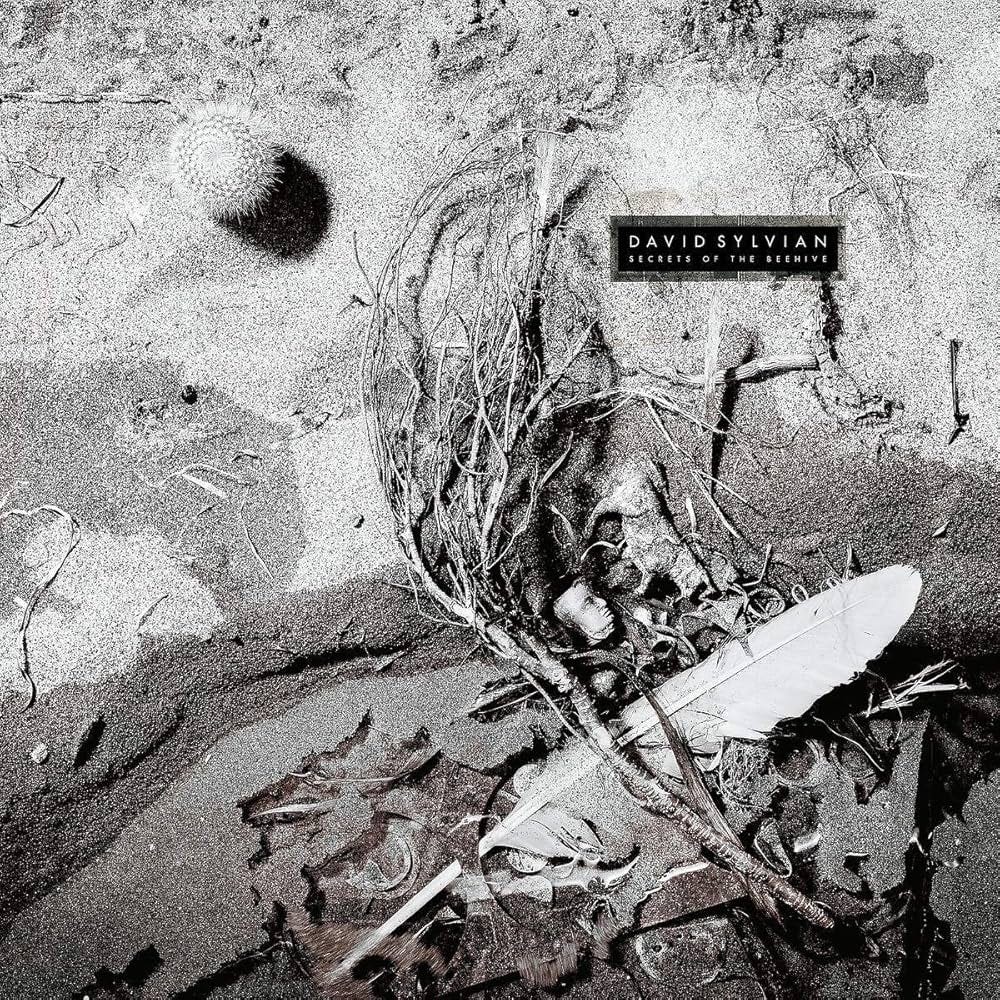
Released on October 19th, 1987, Secrets of the Beehive would be the last studio album to be put out by David Sylvian until 1999 with Dead Bees on a Cake. While Gone to Earth can be seen as encompassing the full scope of all of the elements of Sylvian’s 1980s solo work, Secrets of the Beehive is largely seen as the artistic pinnacle of his solo material, especially as regards his 80s output. The irony of this sentiment is that Sylvian himself viewed the album as “something of a failure” due to the time and budget restraints of the recording process which led to the omission of a song called “Ride,” which itself is a lovely track that would have certainly fit in with the record and further established the restrained, ballade-like tone of the music.
Regardless, this album is widely beloved for being a polished showcase of most of Sylvian’s idiosyncratic songwriting style in all its subtle efficiency with crucial contributions from Ryuichi Sakamoto, Steve Jansen, Phil Palmer, David Torn, Danny Cummings and Mark Isham. Sakamoto and Brian Gascoigne would also contribute with the extravagant orchestral arrangements that swirl throughout the record with the well-crafted production being handled once more by Steve Nye.
The full track listing for Secrets of the Beehive is listed as follows:
September
The Boy With The Gun*
Maria
Orpheus*
The Devil’s Own
When Poets Dreamed Of Angels*
Mother And Child
Let The Happiness In*
Waterfront*
*the noteworthy songs selected here for particular discussion and examination
“The Boy With The Gun” bears similarities to a previous track in Sylvian’s catalogue which was discussed earlier – “The Ink in the Well” – with how it acoustically trudges along with Sylvian’s narrative work and graphic word painting presenting us with his own version of a modernized Folk song format. Sylvian has always been one of the more effective descendants of David Bowie as regards immersive storytelling abilities and this song exemplifies how Sylvian is able to construct an engrossing, musical tale which is detail-laden, but not overindulgent.
He pauses at the city’s edge
Of hellfire and of stone
He summons up the devil there
To give him courage of his own
He’ll free the sinners of deceit
They’ll hear his name and run
His justice is his own reward
Measured out beneath the sun
“Orpheus,” the second single released from the album, is the most folk-like of all the songs off the record and is also perhaps the most accessible in its content. This is one of those charmingly uplifting songs in his often gloomy œuvre and the reference to the captivating mythological figure who was a renowned musician and poet in his own right is central to the theme of this work. Without dogmatically settling on firm definition, the lyrics, which drive the song, come across as a persistent search for all that is beautiful, glorious and redeeming in life in spite of all of the many troubles that plague the narrator.
Through it all, Orpheus remains by their side as a grounding fixture to press on and endeavor to discover all of the art and beauty of life. Breaking the song down to the very core musical constituents of an acoustic guitar, piano, strings and voice, this song is a faithful successor to the Leonard Cohen-like Folk tradition of the past while Sylvian’s enthralling artistry still renders the work as freshly modern and inventive.
Sleepers sleep as we row the boat
Just you, the weather and I gave up hope
But all of the hurdles that fell in our laps
Was fuel for the fire and straw for our backs
“When Poets Dreamed Of Angels” is a track with an undeniable Spanish influence elegantly coloring all aspects of the music. Interweaving and reactive Flamenco-like guitar lines crawl to and fro with deeply resonant tonal colors which fit quite well with Sylvian’s rich baritone recitation. A familiar, freely improvised section makes up the B section with the Spanish influence still at the fore and providing a rhythmically alive environment where woodblocks, hand claps and Classical guitars all dance around each other in a space that is still identifiably David Sylvian-like, but with a novel musical character which surprisingly works brilliantly in this disparate context.
When the poets dreamed of angels
What did they see?
History lined up in a flash at their backs
“Let The Happiness In,” the first single released from the album, is another one of those unexpectedly hopeful tracks that may bring to mind an image of the sun slowly but surely emerging from behind the dark and imposing clouds before it – a sincere longing for betterment and a change in one’s situation that persistently lingers in spite of it all. We saw this sentiment echoed in “Orpheus” and it is voiced more directly in the context of this song. A dense, almost bittersweet synth pad steadily alternates between light and dark chords which present and resolve tension as a constant, unmoving fixture in this track. The light side of things is much more pronounced with the help of a softly active percussion section, a lyrical muted trumpet and a subtle yet impactful brass section which support Sylvian’s beautifully optimistic singing and lyrics.
I’m waiting on the empty docks
Watching the ships roll in
I’m longing for the agony to stop
Oh, let the happiness in
Oh, let the happiness in
The album closes out with “Waterfront” which showcases the Sinatra-Sylvian tie quite clearly. The substance of the track is provided by just Sylvian’s vocals, hints of rhapsodic piano and a lushly orchestrated string section – provided once again by Ryuichi Sakamoto – which is stately and romantic in a perfectly complimentary way to David’s grand singing. This track is straightforward in its lyrical presentation and closes the album on a satisfactory note containing the core of what makes David Sylvian so compelling.
With all of the various intricacies and coloristic flairs which make his music such a strikingly detailed listening experience, his artistry, at its core, is founded on the emotional power of raw and earnest simplicity which is voiced through a medium completely devoid of superficiality and insincerity. “Waterfront” is a perfect way to conclude Secrets of the Beehive because it makes clear the very essence of what makes David Sylvian’s music so valuable and emotionally potent in the 1980s and beyond.
On the waterfront the rain
Is pouring in my heart
Here the memories come in waves
Raking in the lost and found of years
And though I’d like to laugh
At all the things that led me on
Somehow the stigma still remains
Is our love strong enough?
The 1980s will remain as one of the most significant decades of music with a plethora of new concepts and artistic ideals paving the way for a much wider stage on which to create and discover. The ideas of what the form of a piece of music could be was reassessed across many genres; new sound capabilities provided artists the means with which to express in more emotionally nuanced ways beyond that of typical instruments beforehand; the blurring of genre definition itself helped the most ambitious and unrelenting of artists to establish themselves separate from what could be more easily restrained and pigeonholed. There were plenty of artists all around that seized these enticing opportunities to create a type of new art that was truly progressive and everlastingly influential for future artists to look to for endless inspiration. David Sylvian remains at the forefront of such memorable visionaries and deserves much more credit than he has gotten for how much he has given to music.
While this article specifically focused upon David Sylvian’s classic 1980s material, the rest of his discography is just as important and you will be greatly rewarded upon looking into any of his other fascinating creative pursuits. Blemish, released in 2003, shows Sylvian at his most vulnerable and skeletal with a highly modernized sound which still sounds fresh and relevant today. Manafon, released in 2009, would see the full realization of his free improvisatory music and present yet another new dimension to his seemingly endless capabilities as an ever-innovative creator. Regardless of whatever era of his which may interest you the most, David Sylvian is one of the most important artists of our modern era and should rightly be placed amongst the ranks of those very few artists in history which have presented us new perceptions of how we may view art and in turn, how we can always find for ourselves exciting and impactful means of expression.


